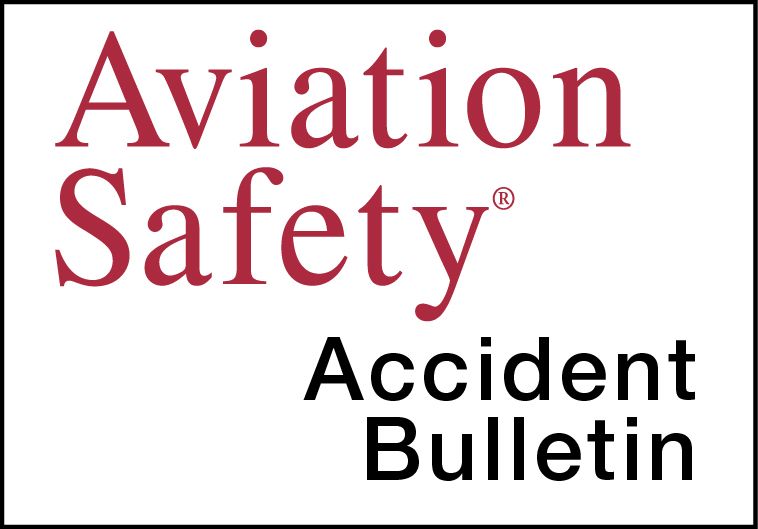AVweb’s General Aviation Accident Bulletin is taken from the pages of our sister publication, Aviation Safety magazine. All the reports listed here are preliminary and include only initial factual findings about crashes. You can learn more about the final probable cause on the NTSB’s website at www.ntsb.gov. Final reports appear about a year after the accident, although some take longer. Find out more about Aviation Safety at www.aviationsafetymagazine.com.
October 11, Mesa, Colo.
Beech 58TC Turbocharged Baron
The airplane was destroyed at 0857 Mountain time when it impacted terrain. The solo pilot was fatally injured. Visual conditions with 15-knot surface winds were reported nearby.
According to witnesses at the airport, this was the airplane’s first flight since an annual inspection had been completed. After adding 100 gallons of fuel, the pilot departed Runway 03 at about 0843 and proceeded northeast for about four nm, and then turned left to the north-northwest and continued climbing. At 0852, the pilot reported to ATC he was climbing through 11,000 feet MSL to 14,000 feet.
At 0855:51, the airplane turned right and descended about 1000 feet, then climbed to 15,000 feet. At 0857:00, ATC asked the pilot, “Did you get an updraft, mountain wave out there? I’m showing you 800 feet high.” The pilot failed to respond. At 0856:26, however, the airplane began a rapid descent toward terrain. Although there was no active AIRMET, SIGMET, Convective SIGMET, or Center Weather Advisory for the route of flight, the NTSB noted “the potential for light to moderate turbulence and mountain wave activity near the accident site.”
October 11, 2021, Santee, Calif.
Cessna 340A
At 1214 Pacific time, the airplane was destroyed when it impacted a residential street while attempting an ILS approach. The solo pilot and one person on the ground were fatally injured; two people on the ground sustained serious injuries. Visual conditions prevailed at the destination airport under broken and overcast cloud layers.
After an apparently uneventful flight from Arizona, ATC began vectoring the flight for the ILS Runway 28R approach at 1209:20. The airplane was level at 3900 feet MSL. At 1211:19, ATC stated it appeared the airplane was drifting right of course, which the pilot acknowledged. Shortly, ATC canceled the approach clearance and issued a series of heading and altitude instructions, which the pilot acknowledged but seemed to have trouble complying with. At 1213:35, ATC issued a low-altitude alert and advised the pilot to expedite a climb to 5000 feet.
Preliminary ADS-B data show the airplane continued a right descending turn until the last recorded target, located about 1333 feet northwest of the accident site at 1250 feet MSL. The debris path—consisting of various airplane, vehicle and residential structure debris—was about 475 feet long and 400 feet wide.
October 13, 2021, Blairsville, GA
Piper PA-24-260 Comanche 260
The airplane was destroyed at about 0816 Eastern time when it impacted terrain during initial climb. The instrument-rated private pilot was fatally injured. Instrument conditions prevailed; an IFR flight plan had been filed.
According to preliminary ADS-B data, the pilot departed Runway 08 at about 0815 and turned left to a heading of about 300 degrees, and then initiated a right turn before the data ended. The airplane impacted trees and terrain on a heading of 090 degrees about 1.5 nm north of the runway’s departure end.
Takeoff minimums and procedures for the departure airport require pilots to climb in visual conditions to cross the airport at or above 4500 feet msl before proceeding on course. Weather minimums for the climb in visual conditions were a 2700-foot ceiling and three miles of visibility. Weather at 0815 included a ceiling of 200 feet overcast with ¼ mile visibility in fog.
October 31, 2021, Chattahoochee, Fla.
Van’s RV-4 Experimental
At about 1320 Eastern time, the airplane was destroyed when it impacted terrain after its canopy reportedly departed the airframe. The solo pilot was fatally injured. Visual conditions prevailed.
The pilot took off from Tallahassee, Fla., at about 1303, with Monroeville, Ala., as the destination. After departure, ATC terminated radar services and approved a frequency change. Radar data show the airplane flew westbound for about 17 minutes before contact was lost. An off-duty highway patrolman was outside his residence when the airplane’s canopy fell into his yard. The canopy was about 1.5 miles from the main wreckage. The airplane came to rest in a wooded area at the end of a 550-foot-long debris path oriented about 220 degrees magnetic. The debris path included all major portions of the airplane, except the canopy.
This article originally appeared in the January 2022 issue of Aviation Safety magazine.
For more great content like this, subscribe to Aviation Safety!




































On the RV-4: I don’t understand what caused the crash. Did the canopy cut/blind/knock out/incapacitate/kill the pilot when it departed the airframe? Break a horizontal stab? Or is the drag of an open cockpit in an RV-4 so high that the plane can’t maintain flight? I’ve heard reports of the gull wing canopy on Glassairs departing the airframe. But of course, those are not front facing, and absent damaging the horizontal stabilizer as they fly away, the big fight in the Glasairs is with drag.